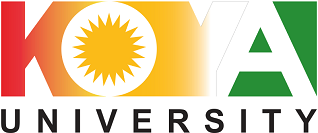شیکردنەوەی ئابووری پێوانەی هۆکارەکانی کاریگەری هەمەجۆری هەناردەکردن لە ئابووری عێراقدا
:
https://doi.org/10.14500/kujhss.v8n1y2025.pp457-467:
هەمەجۆری هەناردەکردن،" ; (هێڵکە فاکتەرە ئابووریەکان،" ; (هێڵکە ئابووری،" ; (هێڵکە ئەزموونی سنوور ARDL،" ; (هێڵکە عێراقپوختە
ئەم توێژینەوەیە گشتگیرە بە وردی هۆکارە گرنگەکانی هەمەجۆری هەناردەکردنی عێراق لە ماوەی 2005 تا 2023 دردەخات وبەتایبەتی تیشک دەخاتە سەر کۆمەڵێک هۆکاری ئابووری و دارایی و سیاسی. لە چوارچێوەی بەکارهێنانی دیاریکراوی شێوازی ئەزموونی سنووری دواکەوتنی خوددابەشکراوی پێشکەوتوو (ARDL)، توێژینەوەکە بە وردی پەیوەندییە کورت و درێژخایەنەکانی نێوان هەمەجۆری هەناردەکردن (DIV) و چەندین گۆڕاوی پێکەوە بەستراو دەکۆڵێتەوە لەوانە هەناردەکردنی کاڵا و خزمەتگوزاری (EXGS)، سەقامگیری سیاسی (POST)، داهاتی نەوت (OILR) و کراوەیی بازرگانی (TRADE). دەرەنجامە وردەکارییەکان بەڕوونی ئەوە دەردەخەن کە کراوەیی بازرگانی و سەقامگیریی سیاسی وەک گرنگترین هۆکاری ئەرێنی بۆ هەمەجۆری هەناردەکردن دەردەکەون، چونکە بەیەکەوە ژینگەیەکی گونجاوتر بۆ فراوانبوونی بازاڕ دروست دەکەن و لاوازییە ئابوورییەکان بە شێوەیەکی بەرچاو کەم دەکەنەوە. بە پێچەوانەوە زیادبوونی پشت بەستن بە هەناردەکردنی کاڵا و خزمەتگوزارییەکان کاریگەری نەرێنی ئاشکرای لەسەر هەمەچەشنی هەیە، لەوانەیە بەهۆی وابەستەبوونی زۆر و نابەردەوام بە کەرتی ئابووری سنووردار. وئەزموونی F-BOUNDS بە بەهێزی پەیوەندییەکی جێگیر و درێژخایەن پشتڕاست دەکاتەوە، بە ئاماژەی ئاماری F 11.72، لە کاتێکدا ڕاستکردنەوەی هەڵە ئاماژە بە رێژەی رێکخستنێکی بەرچاو بە رێژەی 50.95٪ بەرەو هاوسەنگی. سەرەڕای ئەوەش، تاقیکردنەوەکانی دەستنیشانکردن بە شێوەیەکی گشتگیر بەهێزی و متمانەپێکراوی مۆدێلی بەکارهاتوو لەم توێژینەوەیەدا دەسەلمێنێت. ئەم دەرەنجامانە جەخت لەسەر پێویستی بەپەلەی سیاسەتەکان دەکەنەوە کەبەێزی ئازادی بازرگانی سیستماتیک و کاریگەر بەرز بکاتەوە و سەقامگیری سیاسی ببەخشێت و داهاتی نەوت بە وریاییەوە بەڕێوە ببات بۆ بەدەستهێنانی هەمەچەشنی ئابووری بەردەوام و کەمکردنەوەی پشت بەستنی عێراق بە هەناردەکردنی نەوت.
Downloads
سەرچاوەکان
Abdullah, S., & Gray, T. (2022). Political constraints on economic diversification in the Kurdistan Region of Iraq. Energy Policy, 171, 113274.
Alfakih, M. A., & Tabassum, S. R. (2020). The impact of non-oil exports on economic growth in Saudi Arabia. International Journal of Management and Development Studies, 9(1), 24-31.
ALyaseri, I. J. J., & Abbas, M. K. (2022). Iraqi Ability for Economic Diversification and Methods of Avoiding the Rent Trap. Mathematical Statistician and Engineering Applications, 71(4), 2440-2451.
Atasoy, B. S. (2021). The determinants of export sophistication: Does digitalization matter? International Journal of Finance & Economics, 26(4), 5135-5159.
Basodan, H. A. (2023). The Role of Mediators in the Relationship Between Export Diversification and Economic Development.
Brutsaert, D. L., & Sys, S. U. (1989). Relaxation and diastole of the heart. Physiological reviews, 69(4), 1228-1315.
Canh, N. P., & Thanh, S. D. (2022). The dynamics of export diversification, economic complexity and economic growth cycles: Global evidence. Foreign Trade Review, 57(3), 234-260.
Doğan, B., Rao, A., Ferraz, D., Sharma, G. D., & Shahzadi, I. (2023). What do we learn from Nexus between trade diversification and structural change: informing the future about climate action and Sustainability. Environmental Science and Pollution Research, 30(40), 92162-92181.
Gnangnon, S. K. (2020). Effect of the internet on services export diversification. Journal of Economic Integration, 35(3), 519-558.
Hasanov, F. J., Javid, M., & Joutz, F. L. (2022). Saudi non-oil exports before and after COVID-19: Historical impacts of determinants and scenario analysis. Sustainability, 14(4), 2379.
Jiang, G., Alvarado, R., Murshed, M., Tillaguango, B., Toledo, E., Méndez, P., & Isik, C. (2022). Effect of agricultural employment and export diversification index on environmental pollution: building the agenda towards sustainability. Sustainability, 14(2), 677.
Jolo, A. M., Ari, I., & Koç, M. (2022). Driving factors of economic diversification in resource-rich countries via panel data evidence. Sustainability, 14(5), 2797.
Lashitew, A. A., Ross, M. L., & Werker, E. (2021). What drives successful economic diversification in resource-rich countries? The World Bank Research Observer, 36(2), 164-196.
Lee, D., & Zhang, H. (2022). Export diversification in low-income countries and small states: Do country size and income level matter? Structural Change and Economic Dynamics, 60, 250-265.
Li, Y., Chen, B., Chen, G., & Wu, X. (2021). The global oil supply chain: The essential role of non-oil product as revealed by a comparison between physical and virtual oil trade patterns. Resources, conservation and recycling, 175, 105836.
Malik, M. A., & Masood, T. (2020). An Analysis of Economic Diversification of Middle Eastern Countries. Saudi Journal of Economics and Finance, 4(2), 72-76.
Matallah, S. (2020). Economic diversification and governance challenges in MENA oil exporters: A comparative study. The ERF 26th Annual Conference,
Rasheed, M. K., Al-Bairmani, A. M. A., & Al-Hussaini, A. M. J. (2021). The impact of oil exports on consumer imports in the Iraqi economy and COVID-19 period, a theoretical study. International Journal of Computer Applications in Technology, 66(3-4), 246-253.
Semenova, T., & Al-Dirawi, A. (2022). Economic Development of the Iraqi Gas Sector in Conjunction with the Oil Industry. Energies, 15(7), 2306.
Shahzad, U., Lv, Y., Doğan, B., & Xia, W. (2021). Unveiling the heterogeneous impacts of export product diversification on renewable energy consumption: New evidence from G-7 and E-7 countries. Renewable Energy, 164, 1457-1470.
Usman, Z., & Landry, D. (2021). Economic diversification in Africa: How and why it matters. Available at SSRN 3842228.
Downloads
بڵاو کرایەوە
چۆنییەتی بەکارهێنانی سەرچاوە
ژمارە
بەش
License
Copyright (c) 2025 hewa O. Ismael

This work is licensed under a Creative Commons Attribution-NonCommercial-NoDerivatives 4.0 International License.






